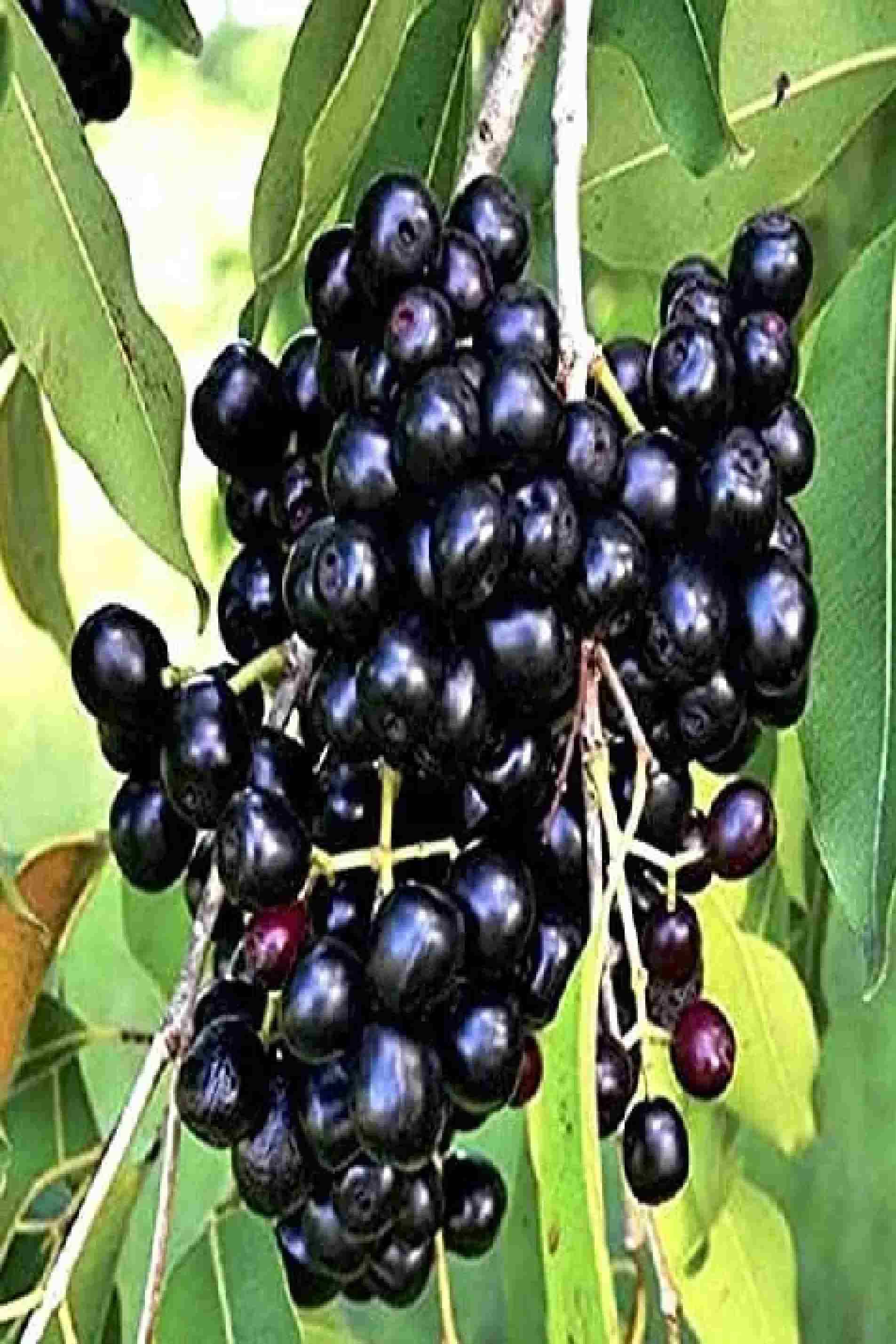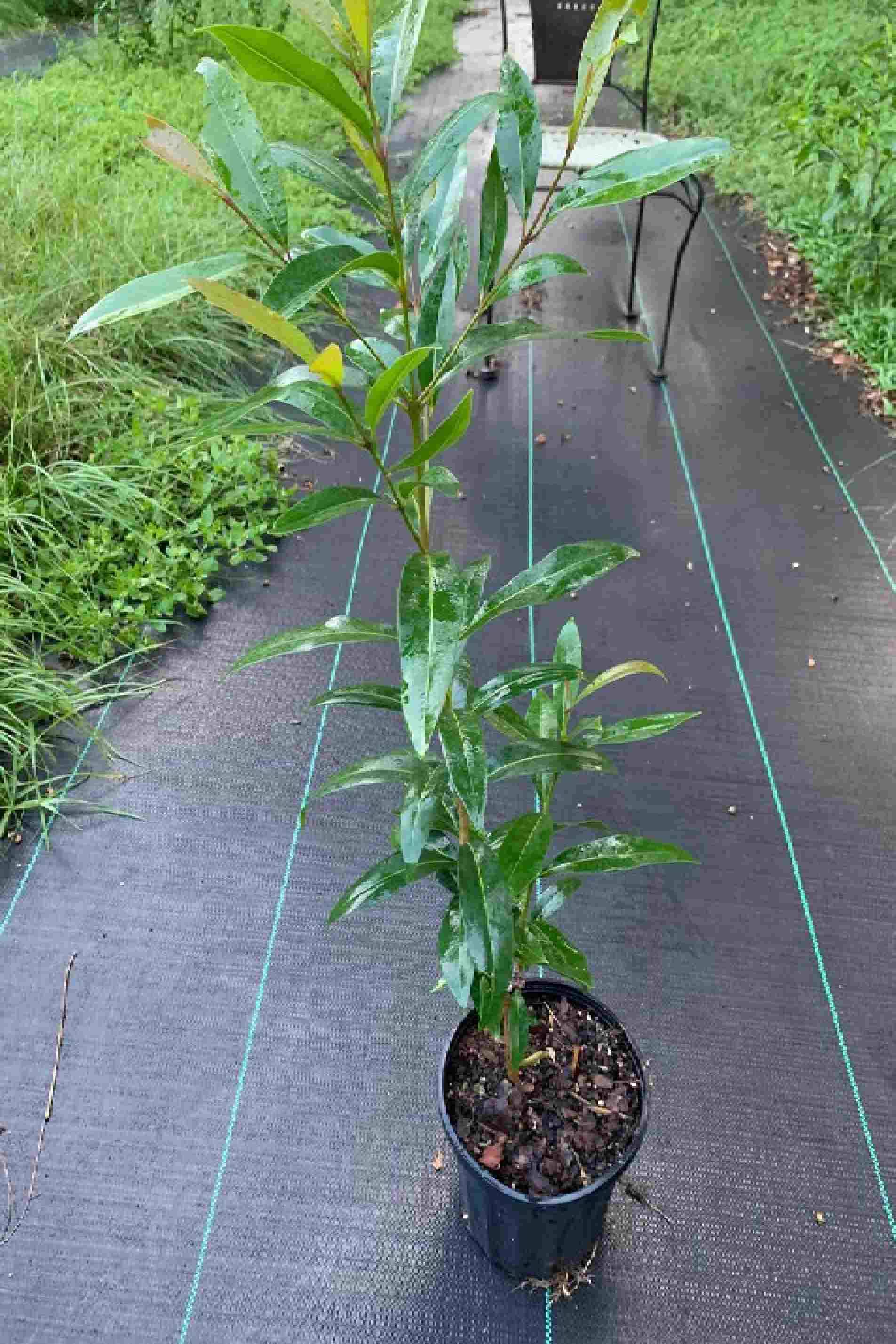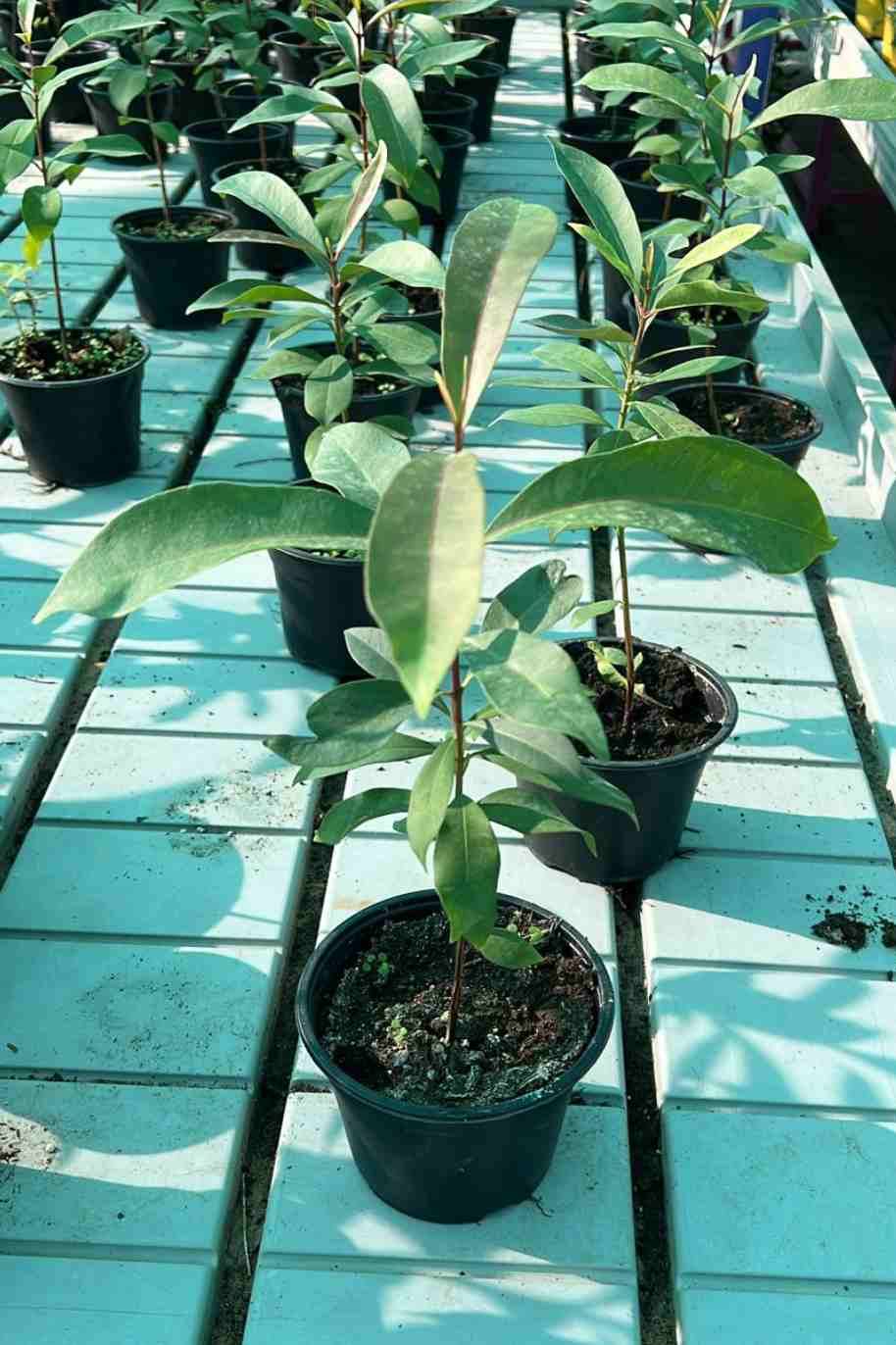Plant Bio
The Java Plum, known scientifically as Syzygium cumini, is an evergreen tropical tree native to the Indian Subcontinent, Southeast Asia, and Australia. Also referred to as Jambolan, Jambul, or Indian Blackberry, it belongs to the Myrtaceae family. The tree is valued for its ornamental qualities, edible fruit, and various traditional medicinal uses. Here's a description of the Java Plum plant:
Leaves: The leaves of the Java Plum are glossy, oval-shaped, and arranged alternately along the branches. They are dark green on the upper surface and lighter green underneath, with prominent veins.
Flowers: Java Plum trees produce small, white to cream-colored flowers that are borne in clusters at the ends of branches. The flowers are often inconspicuous but are fragrant, attracting pollinators such as bees and butterflies.
Fruit: The fruit of the Java Plum is a berry-like drupe, round to oval in shape, and initially green before ripening to shades of purple, black, or bluish-black. It has a sweet and tangy flavor and is commonly consumed fresh or used in culinary preparations such as jams, jellies, juices, and desserts.
Bark: The bark of the Java Plum tree is smooth and grayish-brown when young, becoming rough and fissured with age.
Size: Java Plum trees can vary in size depending on growing conditions and cultivars. They typically range from medium-sized trees to large specimens, reaching heights of 30 to 50 feet (9 to 15 meters) with a similar spread.
Care Guide for Java Plum Plant:
Sunlight:
Plant Java Plum trees in a location that receives full sun to partial shade. They prefer a minimum of 6 hours of direct sunlight per day for optimal growth and fruit production.
Temperature:
Java Plum trees thrive in warm, tropical climates and are not cold-hardy. They prefer temperatures above 50°F (10°C) and may suffer damage or die back if exposed to freezing temperatures.
Soil:
Provide well-draining, fertile soil with a slightly acidic to neutral pH (pH 5.5 to 7.0). Java Plum trees are adaptable to a range of soil types, including sandy, loamy, or clay soils, as long as they are well-drained.
Watering:
Water Java Plum trees regularly, especially during periods of active growth and fruiting. Keep the soil evenly moist but not waterlogged. Once established, they are moderately drought-tolerant but benefit from regular watering during dry spells.
Fertilization:
Feed Java Plum trees with a balanced, slow-release fertilizer formulated for fruit trees in spring, just before the start of the growing season. Follow the manufacturer's instructions for application rates and frequency.
Pruning:
Prune Java Plum trees as needed to maintain their shape, remove dead or diseased branches, and promote air circulation and sunlight penetration within the canopy. Pruning can be done in late winter or early spring before new growth begins.
Mulching:
Apply a layer of organic mulch, such as shredded bark or compost, around the base of the tree to conserve moisture, suppress weed growth, and regulate soil temperature. Keep the mulch several inches away from the trunk to prevent rotting.
Pest and Disease Control:
Java Plum trees are generally resistant to pests and diseases, but occasional issues with aphids, scales, fruit flies, or fungal diseases may occur. Monitor the trees regularly and treat any problems promptly with appropriate insecticides or fungicides.
Propagation:
Propagate Java Plum trees from seeds, air-layering, or hardwood cuttings. Seeds should be sown fresh and kept moist until germination occurs. Air-layering involves making a small incision in a branch, applying rooting hormone, and wrapping it in moist sphagnum moss until roots develop.
Harvesting:
Harvest Java Plum fruit when fully ripe, as indicated by its color change from green to purple, black, or bluish-black. The fruit should be firm yet slightly soft to the touch. Avoid harvesting unripe fruit, as it may be astringent and unpleasant-tasting.
Java Plum trees are prized for their delicious fruit, ornamental foliage, and cultural significance in various regions. With proper care and maintenance, they can thrive and provide a bountiful harvest for many years. Adjust care practices based on your specific growing conditions and the needs of the tree.










